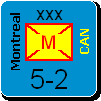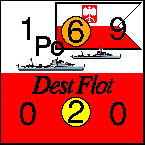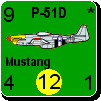Froonp
Posts: 7995
Joined: 10/21/2003
From: Marseilles, France
Status: offline

|
quote:
ORIGINAL: fiveof6
If I had to choose one or the other, then yes I would move the NW line from Seattle to straight east. If both could be included, then that would be more accurate. Also, if the little inlet of water that cuts into the west side of the hex 1 west of Seatlle could be extended down the entire west side of the hexside before hooking east, then it would be more accurate.
As the original map had 1 strait hexside, I prefer to keep having only one.
If you say that the one W of Seattle is more realistic for that period, then I'll move the one that is NW of Seattle to W of Seattle.
Also in a previous post you said :
quote:
ORIGINAL: fiveof6
San Juan Islands
The southern most water hex to the east of Victoria is actually littered with the San Juan Islands. The US and Britain almost fought the Pig War over this island group. http://www.sanjuanmaps.com/images/sanjuanmap-med.jpg
At the time of WWII, there was no regular ferry service to these islands so the red connecting line is unnecessary.
I suppose that the strait hexside you are refering to is the one NW of Seattle, so that's a reason to remove it.
quote:
After looking closer at your included attachment, I noticed another change might be warranted. The Alpine hexside should be moved one hexside straight east, between the forest hex SE of Victoria and the mountain hex two west of Seattle.
This is not possible because alpine hexsides have to be drawn between 2 mountain hexes. The scale of the map, and the hexgrid, are such that sometime fine details can't be depicted.
quote:
There is no difficulty moving north-south on the coastline so perhaps the coastal terrain should be should be forest, east-west requires more effort. However, the abundance of roads and railroads east-west would mitigate the effects of any mountains except southern Oregon. One would have had little difficulty moving a military unit through the coast range on the many roads and railroads that crossed the coastal mountains. Most of the coast range is 700-1500 feet with some areas in S Oregon not accessible due to the depth of the mountains, and fewer rivers and roads.
I apologize for joining the discussion so late, but I'm not exactly sure what the standard is for terrain being considered Mountains. The above Alpine hexside is needed (Mt Olympus at about 7,000 ft), but outside that hexside, the rest of the Washington/Oregon coast range gradually builds to about 2000 feet with highest "peaks" no higher than 3,000 feet, with large rivers cutting through it about every 50 miles or so.
Mountain terrain is used for rugged land, not only high altitude lands.
I'm reluctant to modify the terrain based on only 1 claim, as I put a lot of trust in the original CWiF map designers (The MWiF map is inherited from CWiF).
|
 Printable Version
Printable Version














 Not being done yet... Release two or three is fine.
Not being done yet... Release two or three is fine. 






 New Messages
New Messages No New Messages
No New Messages Hot Topic w/ New Messages
Hot Topic w/ New Messages Hot Topic w/o New Messages
Hot Topic w/o New Messages Locked w/ New Messages
Locked w/ New Messages Locked w/o New Messages
Locked w/o New Messages Post New Thread
Post New Thread